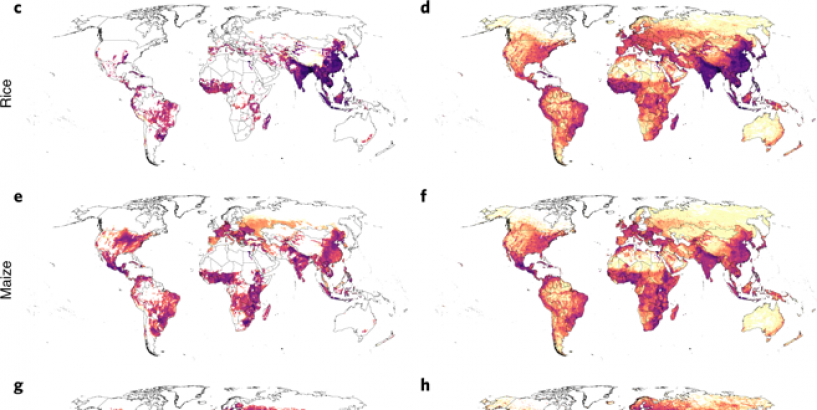The distance between the origin and end-point of food supply chains, and the ‘localness’ of food systems, are key considerations of many narratives associated with sustainability. Yet, information on the minimum distance to food crops is still scarce at the global level. Using an optimization model based on ‘foodsheds’ (that is, self-sufficient areas with internal dependencies), we calculate the potential minimum distance between food production and consumption for six crop types around the world. We show that only 11–28% of the global population can fulfil their demand for specific crops within a 100-km radius, with substantial variation between different regions and crops. For 26–64% of the population, that distance is greater than 1,000 km. Even if transnational foodsheds were in place, large parts of the globe would still depend on trade to feed themselves. Although yield gap closure and food loss reductions could favour more local food systems, particularly in Africa and Asia, global supply chains would still be needed to ensure an adequate and stable food supply. A ‘foodshed’ model indicates the minimum distance between crop production and consumption globally. Results show that most of the world’s population depends on trade to feed themselves, even under different levels of yield gap closure and food loss reduction.
© 2024, Copyrights gulftimes.com. All Rights Reserved









